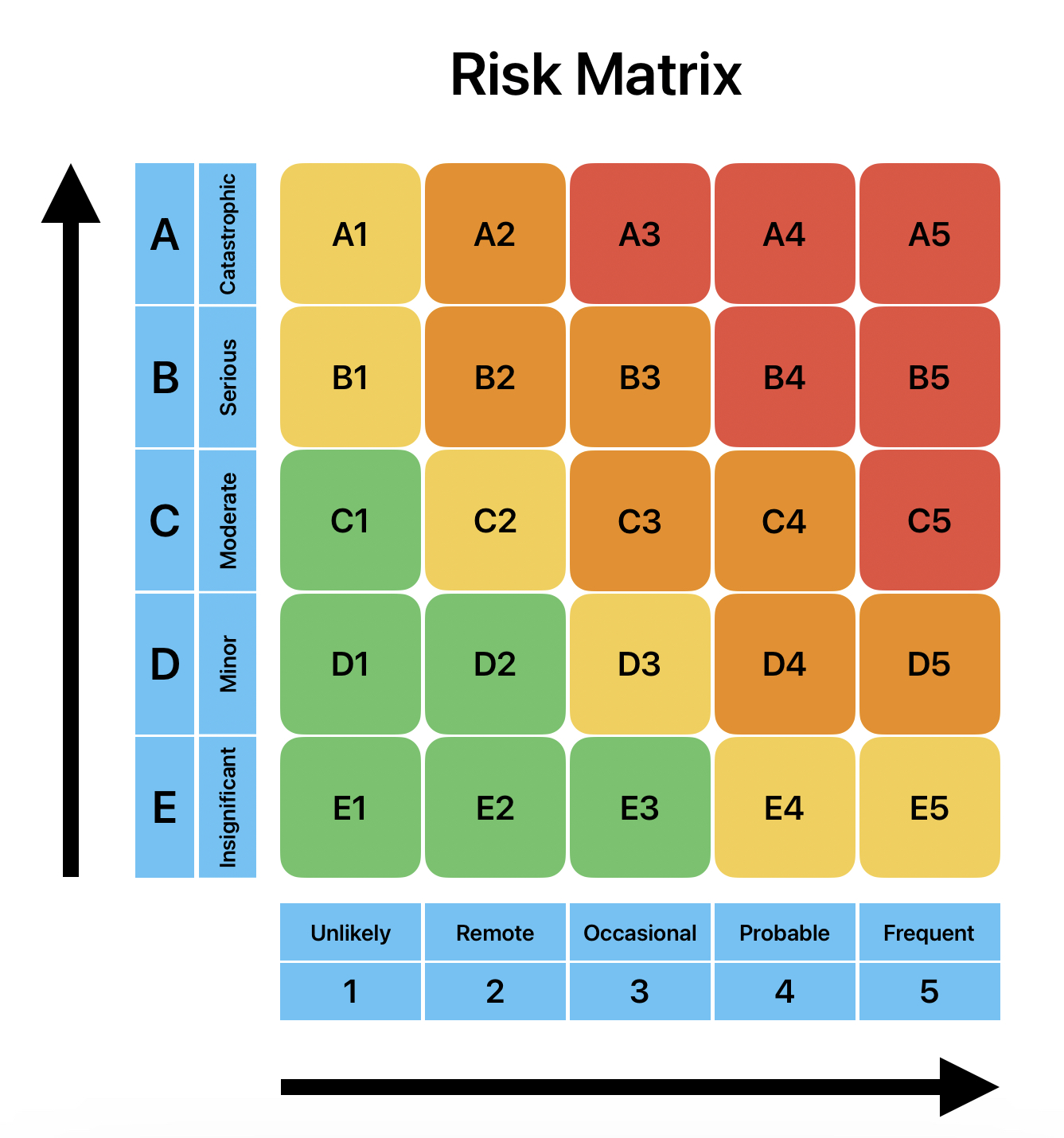Risk is an ever-present factor that can significantly impact the success or failure of endeavors. To navigate this complex landscape effectively, organizations employ various risk management strategies and tools. One such valuable tool is the risk assessment matrix. This tool creates a visual representation of risks and their potential consequences. In this article, we will explore the concept of a risk assessment matrix, its benefits, and how it can be utilized to enhance decision-making and mitigate potential risks.
Understanding Risk Assessment
A risk assessment is the process of identifying, analyzing, and evaluating potential risks to determine their likelihood and impact. It allows organizations to proactively address risks, prioritize resources, and develop appropriate mitigation strategies. A risk assessment matrix, also known as a risk matrix, is a graphical tool that visually displays the likelihood and severity of identified risks. By plotting risks on a matrix, organizations gain a comprehensive understanding of their potential impact and can allocate resources accordingly.
This tool is typically used during a Task Based Risk Assessment to establish both the inherent and residual risk. For more and more inherent and residual risk, see my article linked here.

The Components of a Risk Assessment Matrix
A risk assessment matrix typically consists of two main components: likelihood and impact (sometimes referred to as probability and severity). Likelihood represents the probability or frequency of a risk occurring, while impact refers to the potential consequences or severity of a risk materializing. These two dimensions are divided into several levels, often represented by a numerical scale or color-coded zones, creating a matrix that organizes risks based on their potential significance.

Creating the Risk Assessment Matrix
To develop a risk assessment matrix, organizations need to define the levels of likelihood and impact that best suit their specific context. The levels can vary depending on the organization’s risk appetite and industry standards. For example, likelihood might be categorized as low, medium, and high, while impact could be denoted as negligible, minor, moderate, major, and catastrophic. By defining these levels, organizations can assign numerical values or colors to each cell in the matrix, facilitating risk prioritization and decision-making.

Utilizing the Risk Assessment Matrix
Once the risk assessment matrix is created, it becomes a powerful tool for risk management. It enables organizations to identify and focus on high-priority risks that require immediate attention. By evaluating the likelihood and impact of each risk, decision-makers can prioritize mitigation efforts, allocate resources effectively, and develop appropriate contingency plans. The matrix also facilitates communication by providing a visual representation that allows stakeholders to quickly grasp the risks involved and the severity of their potential impact.
Benefits
Implementing a risk assessment matrix offers numerous benefits for organizations, including:
Enhanced Decision-Making
The matrix provides a clear visualization of risks, enabling informed decision-making based on their likelihood and impact.
Risk Prioritization
By categorizing risks according to severity, the matrix helps prioritize mitigation efforts and resource allocation.
Effective Communication
The matrix simplifies risk communication, allowing stakeholders to understand the potential consequences and make informed choices.
Standardized Risk Management
The risk matrix establishes a uniform framework to evaluate risk within an organization, effectively minimizing inherent variations in risk perception among its members. This fosters a consistent and standardized approach to safety management and becomes a valuable tool for organizational leadership to define the desired safety culture. In essence, it helps determine the acceptable and unacceptable levels of risk.
Continuous Improvement
Regularly updating and reviewing the matrix helps organizations improve their risk management strategies over time. It will be necessary to do so as circumstances evolve and the organizations risk tolerance shifts.
Final Thoughts
In an increasingly uncertain and competitive world, effective risk management is crucial for organizations to thrive. The risk assessment matrix serves as a valuable tool, empowering decision-makers to understand, prioritize, and mitigate risks. By adopting this approach, organizations can proactively manage risks, enhance decision-making processes, and ultimately increase the likelihood of successful outcomes.

One thought on “Mastering Risk Management: The Power of Risk Assessment Matrix”
Comments are closed.